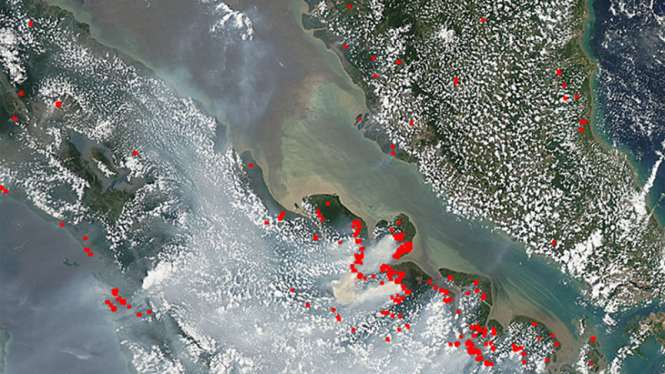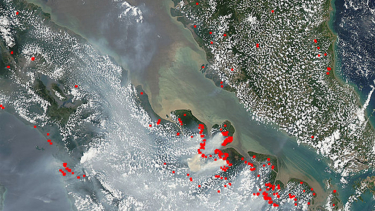Ministry Prepares 500,000 Hectares of Farmland to Anticipate El Nino
- NASA
Jakarta – The Indonesian Minister of Agriculture, Syahrul Yasin Limpo said that government will prepare 500,000 hectares of farmland to anticipate the impact of the El Nino phenomenon.
"Since the El Nino warning was issued this year, Agriculture Ministry has routinely carried out inspections in regions and reviewed the facilities for supporting rice production," Minister Limpo said after a meeting chaired by President Joko Widodo (Jokowi) at the Presidential Palace complex in Jakarta, on Wednesday.
He also stated that he recently inspected several reservoirs and dams in several regions and saw data showing that the irrigation function was still running well.
"I have actively coordinated with regional heads to anticipate El Nino, and mapped out the worst potential impact of El Nino on rice stocks in Indonesia for the August-September 2023 period," he explained.
Menteri Pertanian, Syahrul Yasin Limpo
- Kementan
According to him, there is a possibility of a production shortfall due to El Nino of around 300 thousand tons to 1.2 million tons.
He said that production lands that have been prepared to anticipate El Nino are located in North Sumatra, South Sumatra, Central Java, West Java, East Java, and South Sulawesi.
In addition, the government has also readied buffer regions for production in South Kalimantan, West Nusa Tenggara, Banten, and Lampung.
He said that he is optimistic about keeping the impact of El Nino under control and preventing it from disrupting national food stocks, especially rice stocks.
Based on the data provided by the Ministry of Agriculture, the stocks and prices of rice are still maintained so far. As of September 2023, the government will still have surplus rice stocks of 2.7 million tons, he added.
"Every month, there is still a harvest of 800 thousand hectares, and it produces sufficient (quantity) for our needs of around two million (tons) per month," he concluded.
































